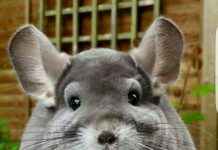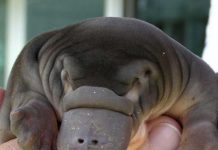The West Highland White Terrier, which once served as a mountain hunting dog, attracts lovers of decorative breeds with the appearance of a soft toy and mischievous disposition. However, one of the hunting skills, indispensable for the owners of personal plots, has been preserved in furry pets - cleaning the territory from neighboring cats.
Material Content:
Breed description
West Highland White Terriers are compact hunting burrowing dogs native to Scotland, characterized as motivated and passionate. In England, the news was recognized as excellent fox hunters, badgers, rabbits and other rodents, acting wonderfully underground even without auditory communication with the owner. In the CIS countries, white fluffies are acquired as companions with a miniature size and a fairly compliant character, if from the first days it is correct to build a communication scheme with the baby.

An important feature of a dog is the lack of a specific "dog" smell. The presence of a sweet creature in a home can only betray a sonorous and funny bark. A small pet stands out for its excellent protective qualities, being alert and loyal to its owner.
Origin history

Information about the ancestors of the modern breed, the breeding of which began to be dealt with only in the 19th century, is covered in a mysterious nebula. The first mention of hunting white terriers dates back to the 12th century.However, reliable data on whether they were the progenitors of the vests is not available. Among the relatives of the latter, the breeds similar in appearance are distinguished: core and scotch terriers. The four-legged helpers, who participated in the hunt, crossed among themselves and were called by one common name - Scottish terriers. In those days, the breed was represented by dogs of both white and cream, piebald colors. However, the snow-white color favorably distinguished small hunters, which became more difficult to confuse with the prey itself.
In 1907, a demonstration of the breed took place in London, which became the beginning of the distribution of West Highland White Terriers around the world.
The nature and behavior of West Highland White Terriers
Vesta is distinguished by a sharp mind and companionable disposition. However, due to hunting instincts and a comprehensive love for the owner, they may have conflicts with other pets, the acquisition of which should be carefully considered. Positive and curious, Vestiks are considered the most affectionate of other terriers. But this does not mean that at the sight of a competitor the dog will not be jealous of his beloved owner.
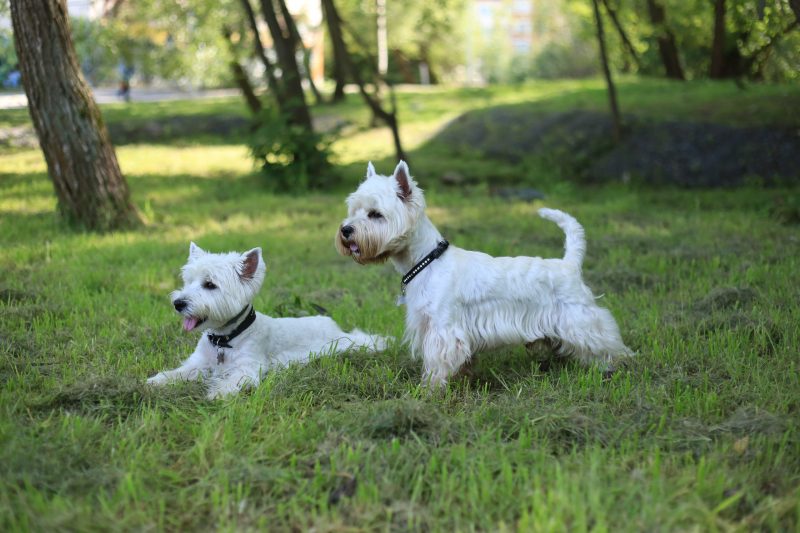
Small dogs, being burrow hunters, like to bark and dig, thereby demonstrating their independence and determination. The rest are intelligent dogs with a calm and decisive disposition, but mischief and fun are not alien to them.
Terriers of this breed get along well with children over 10 years old who will not bother with their whims and pranks inherent in kids of the younger age group. Due to stubbornness, vests may have difficulty learning.
Breed standard and puppy selection
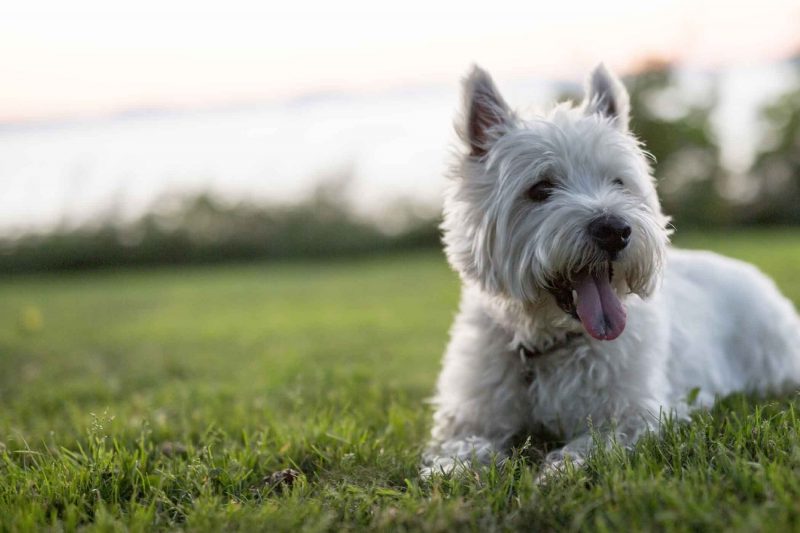
External signs that thoroughbred representatives of the West Highland White Terrier should have:
- Skull - a convex skull box with protruding eyebrows.
- Nose - black lobe.
- The muzzle is shortened.
- Jaw - regular scissor bite.
- Eyes - quite wide apart, dark color with a deep landing.
- Ears are small, erect, triangular-shaped auricles.
- Build - compact, quite muscular with an expanded back.
- Extremities - strong (especially hind), short.
- The tail is of medium length, set high, has no bend in the direction of the back.
- Weight - 6 - 10 kg.
- Growth - 25 - 28 cm.
- Wool - a long, thick hair coat of a rigid structure has a soft and short undercoat.
- Color - white without any inclusions.
How to choose a puppy
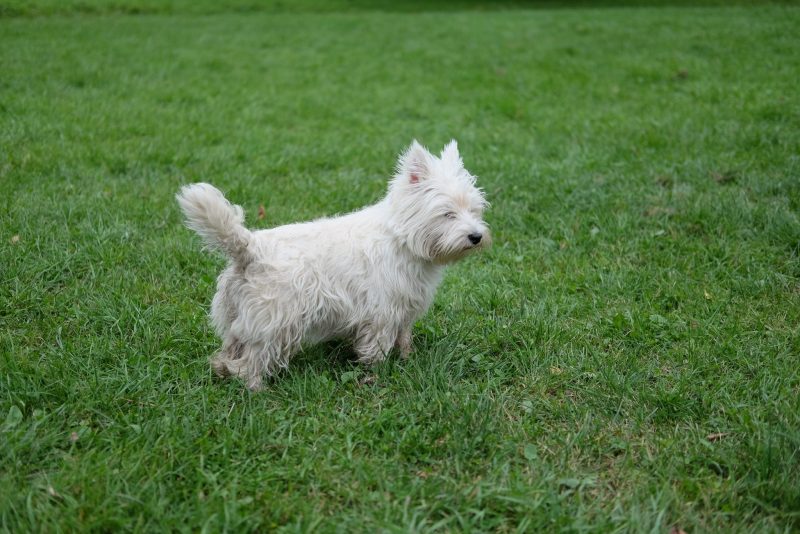
In order for the puppy to please the new owners with good health, an active game and a clear barking, one should responsibly approach the question of his choice, taking into account many factors:
- Place of purchase. They definitely should not be a market where it is easy to be deceived. This kind of acquisition should be made in nurseries that breed West Highland White Terriers.
- Activity, appetite, physique and fatness of the baby, indicating its full development.
- Healthy condition of the eye and ears.
- The presence of a metric and a veterinary passport, which must be mandatory for puppies of brid and show classes.
Features of keeping a dog
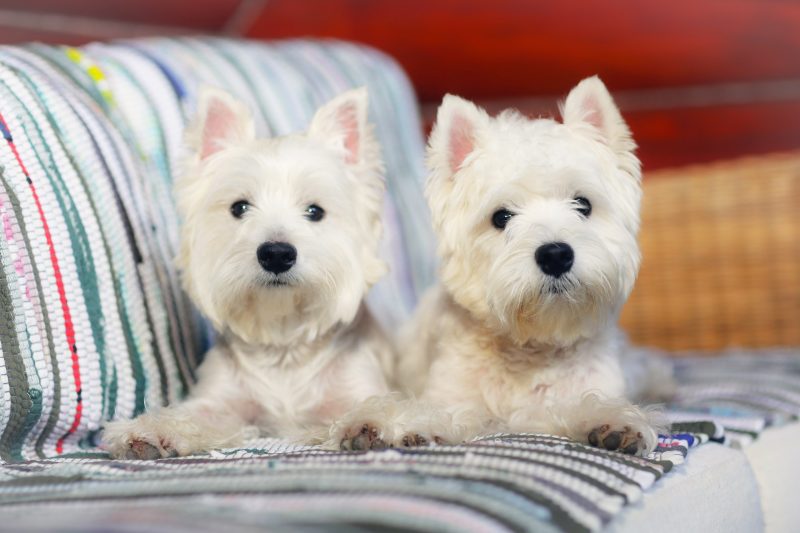
Dogs of hunting breed can live both in small-sized apartments, and in large private houses, where they should be provided with comfortable living conditions:
- Rest zone. A lounger should be placed in a room without drafts. A bowl with clean water, and in some cases a toilet in the form of a tray with a filler, is always placed nearby. An important condition is the presence of toys that help the dog channel energy in the right direction, and not to damage the interior elements.
- Walks. Walking the vest is necessary at least twice a day for a long time. If a large plot of land is adjacent to the house, then you can let the dog frolic in the fresh air on their own, after making sure that she will not make a dig to the street.
Care, health and feeding
If the content is simple, then care for the West Highland White Terrier should be comprehensive.
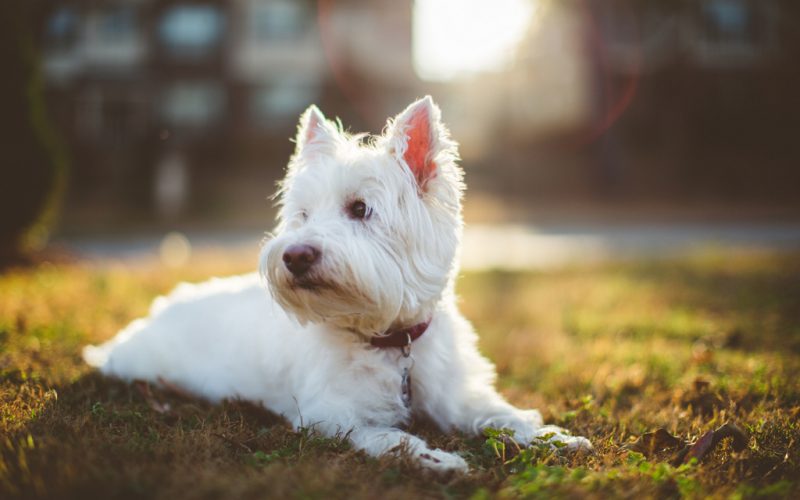
- Bathing. Vesta does not like to swim. In order not to torment the dog, it is enough to carry out water procedures once a month when using shampoos for the appropriate type of coat. At the same time, the bath is filled with water a little cooler than the body temperature of the pet. Paws are washed after a walk.
- Combing. To keep the hair in good condition, the vesta should be combed twice a week with a furminator, which helps to quickly get rid of faded hair. If the dog is show, then she is systematically trimmed. It is enough to trim the representative of the pet class by removing hair around the ears, the eye and the abdomen.
- Eye and ear examination. The dog's eyes and ears should be kept clean. This will help to cope with special solutions that moisten cotton pads and ear sticks. In order to prevent various infectious diseases, cleaning of the organs of vision and hearing is carried out weekly.
- Claw and teeth care. The rounded parts of the horn formations are removed monthly. In winter, when the West Highland White Terrier doesn’t spend so much time on the street and doesn’t erase its claws on its own, special attention should be paid to this procedure.
If the pet’s teeth are not followed, then serious pathologies may arise that are associated not only with the oral cavity, but also with the digestive tract. For the hygienic procedure, special pastes and brushes are used, to which the dog must be trained from a very young age.
Feeding
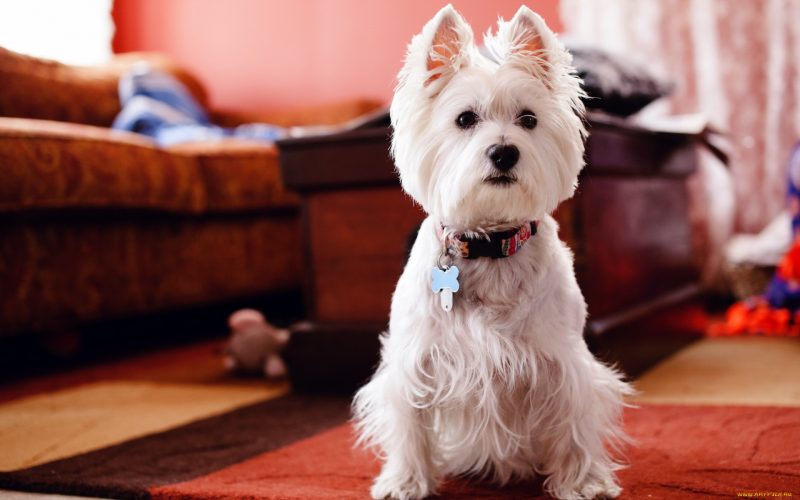
Feeding the West Highland White Terrier follows a balanced diet that contains the vitamins and minerals your body needs. To do this, you can use top-class prepared feeds or prepare natural food from high-quality products - beef, chicken, cereals, dairy products, fish, eggs and vegetables with fruits.
However, for the independent preparation of the diet and cooking, the owner must have the appropriate knowledge, as well as a sufficient amount of time that busy people can hardly find.
Disease and vaccination
West Highland White Terrier is in good health. But with improper care and maintenance, various skin diseases can occur, as well as those associated with the organs of vision and the digestive system.
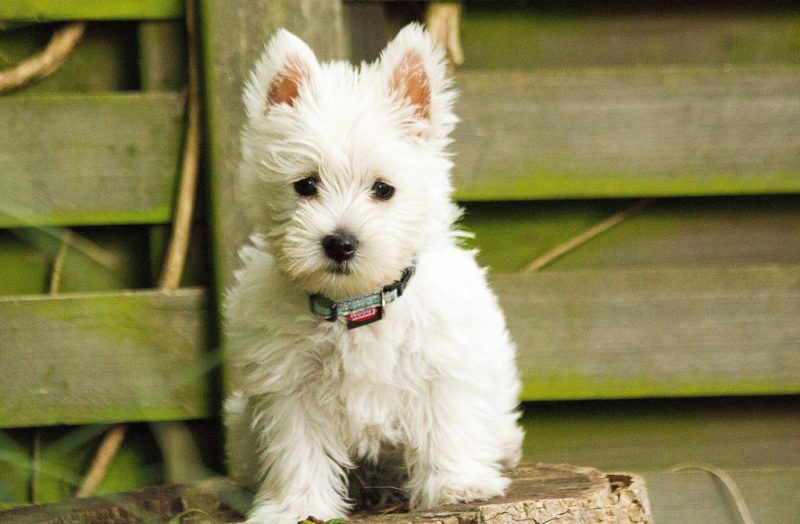
To protect the animal and strengthen its immunity, vaccination should be carried out according to the following scheme:
- At 2.5 months, a comprehensive vaccine is given against rabies, plague and hepatitis.
- At 6 months, the vaccine is administered again.
- Then, annually until the end of life, a pet is revaccinated.
Parenting and training
The West Highland White Terrier dog must be raised in an atmosphere of warmth and harmony with the owner.
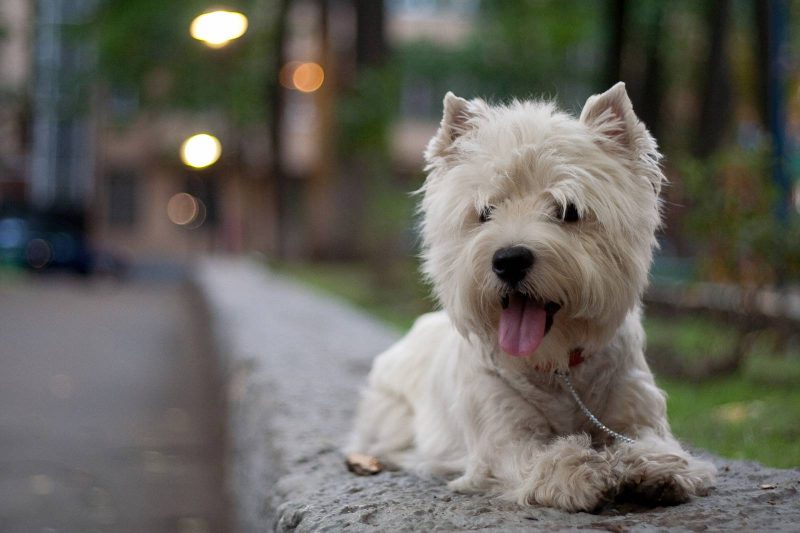
Only with full trust in him will the dog be easily succumbed to training, which is worth starting with six months of age. For completed commands, it is recommended to encourage the pet treats. In case of disobedience, a strict voice will be enough. Do not resort to force.
Pros and cons of the breed
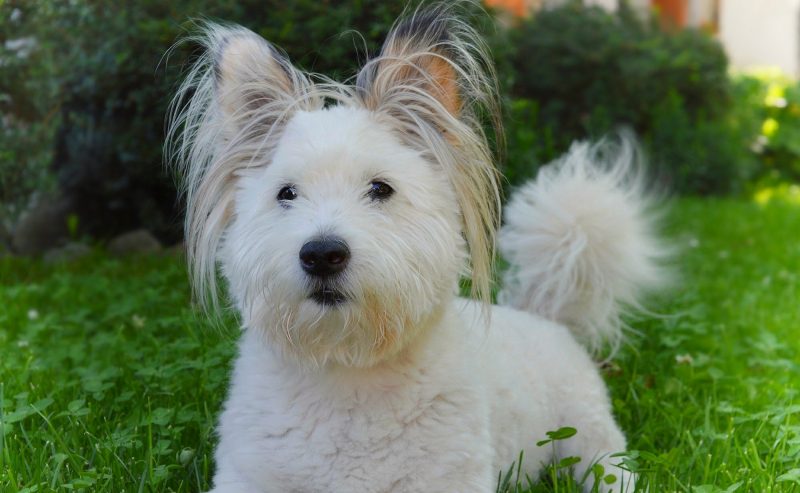
Among the advantages of the breed are:
- excellent adaptation to living conditions in the apartment;
- lack of intense molting;
- cheerfulness;
- good learning ability;
- complaisance and friendliness;
- easy socialization.
Disadvantages are also available:
- the need for long and active walks;
- loud and frequent barking;
- the color of wool;
- stubbornness and independence;
- the hairline needs a haircut or trimming.
How much does the West Highland White Terrier cost?
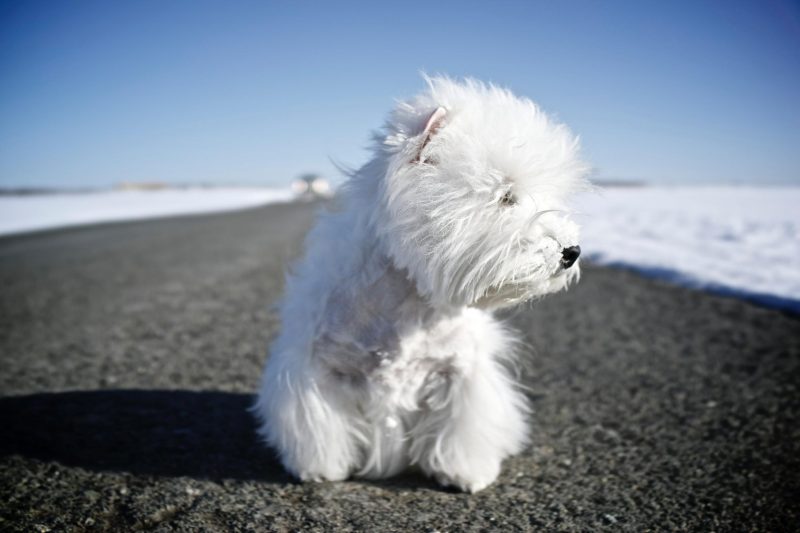
In the price of vests there is a significant run-up, which depends on the compliance of the selected puppy with breed standards:
- Representatives of the pet class, which are not allowed for breeding and exhibitions, cost $ 500.
- The cost of puppies of the brid-class ranges from 500 to 1000 $.
- Kids of the show class from titled manufacturers will cost $ 1,000 - $ 1,500, depending on the big name of the nursery.
The cute face, which so attracts many inexperienced dog breeders, should not be misleading. West Highland White Terrier is a curious, independent dog that needs an active knowledge of the world and careful care, so before making such a purchase, you should really evaluate your own strengths.






